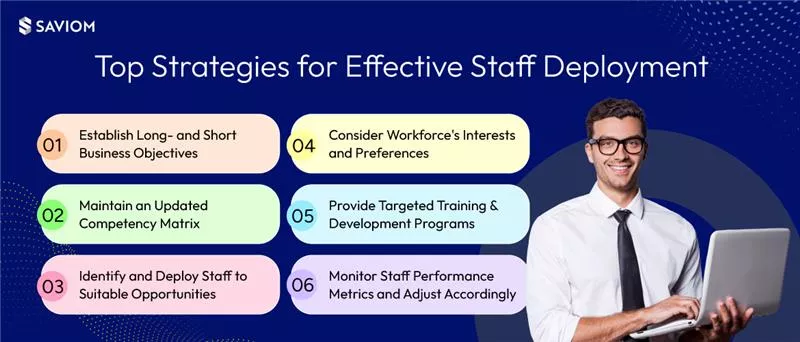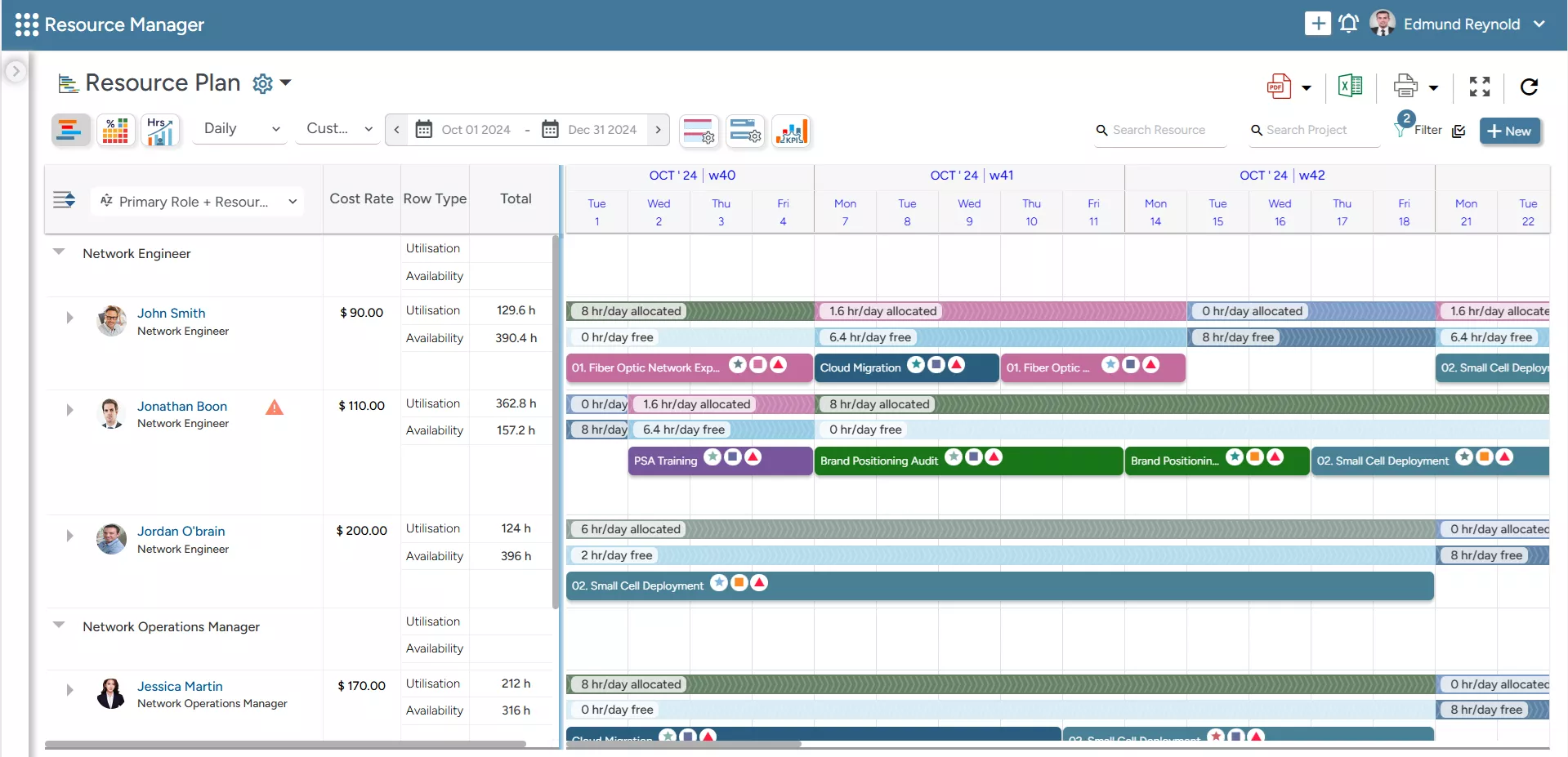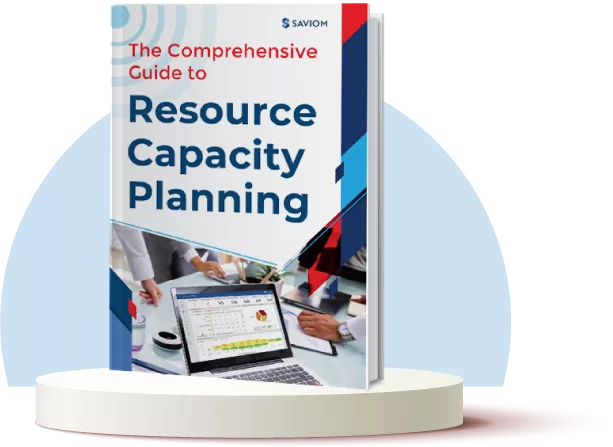Imagine this: A large software development firm has secured two high-priority clients with coinciding project timelines and unique technical demands. However, one of the key developers recently resigned, and two others are on planned leave. The firm is now under pressure to meet tight deadlines without overburdening the available employees. This scenario underscores the need for an effective staff deployment policy.
During such high-stakes situations, a well-structured staff deployment plan helps firms to overcome resource constraints and optimize talent allocation. It leverages real-time staff data to ensure all high-priority projects are initiated on time without compromising quality, maximizing overall business impact.
In this blog, we will dive into the nitty-gritty of staff deployment, including its definition, importance, and strategies to implement it effectively.
Let’s get started!
What is Staff Deployment?
Staff deployment, also known as workforce deployment, is the process of identifying and assigning employees to specific projects and business objectives. It involves allocating employees to the most suitable opportunities based on their skills, capacity, availability, location, and other critical attributes. The primary purpose of staff deployment is to boost profitable utilization, maximize operational efficiency, and achieve higher profit margins.
Consequently, this enables organizations to optimize workforce utilization, boost employee engagement, maximize business productivity, and achieve higher profit margins.
Having covered the staff deployment meaning, let us now explore some key elements to include when creating a plan for the same.
What to Include in a Staff Deployment Plan?
A staff deployment plan is a document that outlines who will work on what, when, and their responsibilities to ensure alignment with overall organizational goals. This document clarifies to relevant stakeholders how staffing decisions are implemented across organizational boundaries.
Moreover, the plan ensures the effective and efficient use of the workforce by providing a structured framework for resource scheduling, workload distribution, and professional growth opportunities. Thus, a well-defined staff deployment plan helps improve team performance and employee retention.
Typically, a staff deployment plan will have the following information –
- Insights into the current workforce, including current skills, responsibilities, workload, capacity, etc., and any potential retirements or layoffs.
- A forecast of upcoming project resource requirements and any potential demand gaps, if any.
- Resource scheduling strategy that explains how the workforce will be allocated to projects based on priority and business value.
- An employee development strategy that helps develop the staff’s capabilities, both for professional and personal growth.
- The plan will include employee retention strategies like offering competitive salary packages, promotions, IDPs, etc., to help acquire and retain top talent.
- A detailed list of employee performance KPIs that help managers track, analyze, and manage the workforce efficiently.
- And finally, the plan will include approved tools like robust resource management software, which will help in staff deployment.
In the next section, we shall understand the concept better.
Staff Deployment Example
Let us take a scenario involving a mid-sized Audit and Accounting firm operating during the peak tax season.
At the outset, managers create a staff deployment plan to allocate auditors and accountants to different client projects based on their skills, expertise, experience level, and availability. For instance, senior auditors with experience in financial services are assigned to complex audits for banking clients. However, junior staff are deployed to assist with routine tasks such as data collection, reconciliation, and report preparation.
Simultaneously, due to an emerging need for cross-border expertise, employees who had expressed interest in international tax were deployed to global audit teams. This not only helped address the project demand but also supported both professional development and individual career aspirations.
Thus, with a well-structured staff deployment plan, managers can optimize workloads, prevent burnout, and ensure project timelines are met on time, within budget, and in compliance with set standards.
Read More: What is Resource Allocation, and Why is it Important?
Now, let’s look at the benefits of staff deployment in firms.
Importance of Effective Staff Deployment
One of the key importance of staff deployment in organizations is that it aligns the right people based on their skills, expertise, experience level, availability, etc., to suitable business needs. This helps enhance employee productivity, minimize operational delays, and deliver high-quality outcomes.
Beyond this, a well-defined staff deployment helps improve employee satisfaction and engagement. When managers assign roles that match individual strengths and career aspirations, they are likely to feel motivated, valued, and perform better at their tasks.
This will ultimately enhance workforce performance, strengthen talent retention, and create a more stable, high-performing workforce that drives the organization’s top and bottom lines.
In the next section, we shall discuss a few crucial strategies that help facilitate effective staff deployment in firms.
Key Strategies for Effective Staff Deployment
Managers must carefully deploy staff to meet business objectives effectively. For that, they can follow the below staff deployment strategies to guide their initial steps –

Establish Long- and Short Business Objectives
The initial way to deploy staff effectively is to comprehend the long-term and short-term business goals. Typically, short-term goals include operational objectives like mitigating urgent skill gaps, meeting upcoming project deadlines, optimizing resource utilization, etc., that drive day-to-day deployment decisions.
Alternatively, long-term goals include strategic workforce planning, investing in new technologies, expanding markets, etc. Thus, by aligning deployment decisions with these objectives, firms can meet immediate & long-term targets to ensure sustained business growth.
Read More: 25 Business Objectives That Every Firm Must Measure for Success
Maintain an Updated Competency Matrix
For effective staff deployment, managers must maintain and track employee skills, expertise, qualifications, certifications, etc., and update the competency matrix regularly. With this insight, firms can ensure precise skills-to-task alignment, thereby enhancing project delivery.
Moreover, an updated skill matrix facilitates proactive workforce planning by identifying areas of improvement, such as expiring credentials, skill gaps, succession opportunities, etc. This foresight helps firms to plan and manage their talent pool appropriately and drive business excellence.
Identify and Deploy Staff to Suitable Opportunities
Managers must first assess employee skills, competencies, experience, etc., and match them to projects or initiatives where they can contribute the most value. When staff are allocated to suitable opportunities, they are more likely to perform well, which minimizes the need for rework or errors.
Furthermore, competent resource allocation ensures that staff are optimally utilized, i.e., avoiding instances of under-/and over-utilization. Thus, by assigning the right people to the right tasks, managers can initiate and execute projects on time and within budget, while improving employee engagement.
Read More: Why is the Overallocation of Resources Bad for You?
Consider Workforce’s Interests and Preferences
To deploy staff effectively, managers must consider factors like role preferences, future ambitions, desired location, etc. This personalized approach helps managers foster a sense of ownership among the employees, encouraging them to take initiative, stay engaged, and consistently deliver high-quality outcomes.
Also, incorporating employee preferences into deployment decisions promotes a positive workplace culture. This creates a workplace environment that supports employee well-being while still meeting business objectives effectively, helping build a more motivated and committed workforce.
Provide Targeted Training & Development Programs
According to a LinkedIn Report 2025, “88% of firms believe that offering learning & development opportunities is a top strategy for talent retention.”
Firms must invest in learning and development initiatives to ensure that staff are equipped with the latest trends, technologies, and best practices. In this regard, they can organize targeted development programs like workshops, mentorships, peer-to-peer coaching, on-the-job training, etc., to keep the workforce up to date.
Managers can also develop an individual development plan (IDP) for each staff member, outlining their career aspirations, strengths, and areas of improvement. This offers a clear blueprint for professional growth & boosts job satisfaction. Thus, when employees feel valued, it strengthens employee loyalty and improves talent retention.
Read More: What is Skill Development? 10 Best Strategies to Build a Future-Ready Workforce
Monitor Staff Performance Metrics and Adjust Accordingly
Managers must systematically track staff performance KPIs like time to task completion, resource utilization rates, training ROI, etc., to ensure that deployment decisions are on track. These metrics offer data-driven insights that allow managers to evaluate whether staff are meeting expectations or falling short.
Equipped with this information, they can adjust the deployment plan in response to changing business demands or individual performance trends. For instance, if managers find that specific roles are not giving the desired output, then they can take proactive measures to address the issue to ensure seamless business operations.
Given the strategies, let us see the advantages of implementing modern resource management software to enhance staff deployment in firms.
How Can a 5th Gen Resource Management Software Help in Staff Deployment?
A robust resource management software offers advanced capabilities that streamline and optimize staff deployment across departments, projects, or teams. Here’s how –
- The tool’s all-in-one resource planner is a central hub for staff deployments and offers 360-degree visibility into essential resource information. It comes with other integrated functionalities like:

SAVIOM’s All-in-one Resource Planner allows managers to gain real-time visibility into current and future workforce schedules for effective staff deployment.
- The multi-dimensional analysis helps managers slice-and-dice resource data across various attributes such as roles, department, location, cost, etc., to make quick and intelligent staffing decisions.
- The embedded capacity planner allows managers to analyze future resource demands and compare them with existing workforce capacity to identify potential shortages/excesses. This gives them ample time to implement corrective resourcing measures.
- The embedded heatmap feature enables managers to gain real-time insight into workload distribution across teams. This helps them mitigate over- or under-utilization and improve staff productivity.
- Next, the intelligent matchmaking feature allows managers to identify and allocate the best-fit staff for projects by analyzing parameters like skill, competencies, expertise, experience, etc. This facilitates competent staff allocation to projects.
- The early warning system flags potential double-bookings, overloading, scheduling conflicts, etc., enabling managers to shift or manage staff allocations accordingly.
- Finally, the KPI forecaster tracks and predicts future staff metrics like availability, capacity, utilization, etc., enabling proactive decision-making.
2. Beyond this, the software provides advanced resource forecasting, enabling managers to gain complete foresight into pipeline project demands, facilitating efficient staff planning for projects.
3. The tool’s inbuilt competency matrix enables seamless talent planning by tracking, recording, and updating the staff skills, competencies, certifications, expertise, etc., available within the firm. This helps identify skill gaps and initiate targeted upskilling programs or recruitments.
4. The platform offers real-time BI reports, analytics, and dashboards that provide actionable insights into staff performance like planned vs. actuals, utilization levels, capacity, etc., supporting informed decision-making.
5. Finally, the what-if analysis helps managers simulate and compare various staff allocation strategies based on factors like availability, cost, project demand, etc., to devise a cost-effective and efficient staff plan.
Read More: How Can You Make Data-Driven Decisions with Resource Management Software?
Conclusion
“Great vision without great people is irrelevant.” – Jim Collins.
This quote highlights the importance of staff deployment, that just having talent is not great, but it lies in deploying them wisely. Hence, effective staff deployment ensures that skilled professionals are better positioned to meet requirements where they can deliver the most value, achieve business goals, and drive organizational success.
So, are you ready to improve your staff deployment strategies?
The Glossary
Read More: Glossary of Resource Workforce Planning, Scheduling and Management










